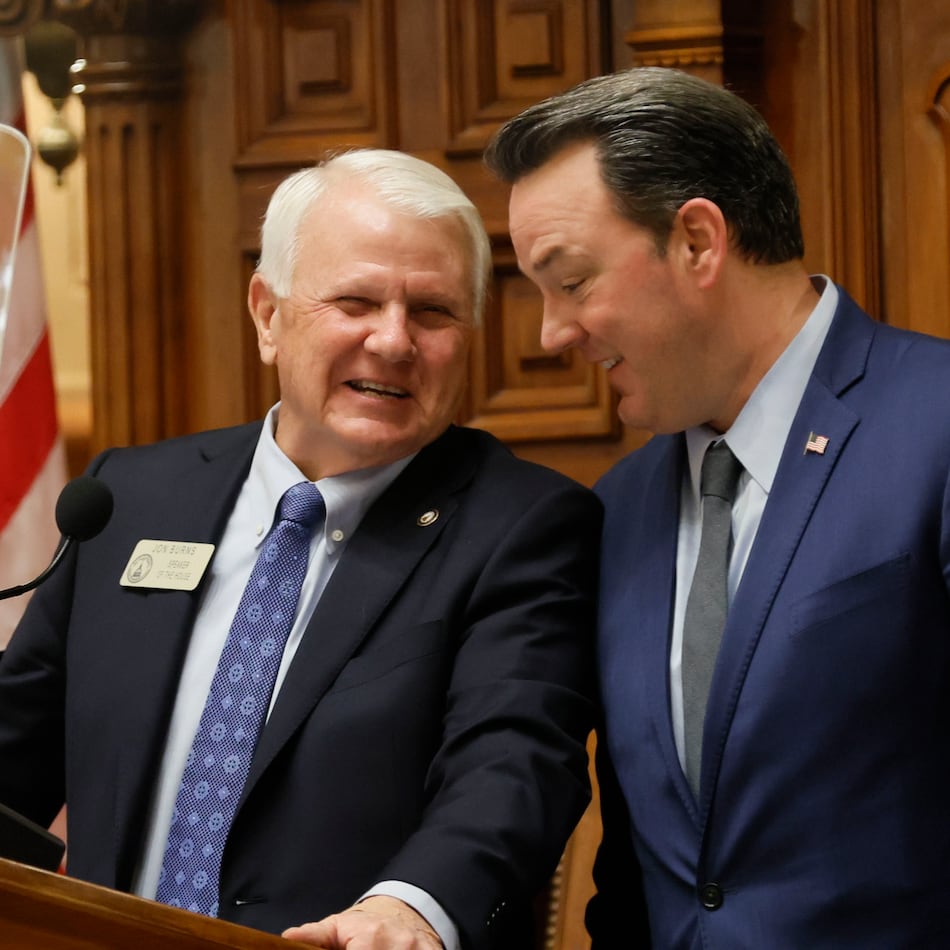NORTH PORT, Fla. — As a young boy, Spencer Strider was interested in music and wanted to take guitar lessons. His mom had another idea.
“You have to take piano lessons first,” Bonnie Strider told her son.
She issued a challenge: You can learn the guitar if you first take five years of piano lessons.
“Seven years later,” Spencer said, “I was playing the piano still and nobody was signing me up for guitar lessons, so I said, ‘Screw it.’”
The Striders owned a guitar. Spencer went on YouTube – which was at its peak at this time – and found someone named Marty Schwartz, who brands himself on the platform as “Marty Music” and also runs GuitarJamz, a website that says it is “the internet’s leading guitar instruction resources with an all-star roster of teachers.”
The site offers free guitar lessons. “Island In The Sun” by Weezer is the first song Strider ever learned, and he eventually taught himself to play Eric Clapton songs and other music.
“Just go find the video and learn that song,” Strider said. “And then that culminates into knowing how to play guitar and write music and stuff.”
This might be Strider’s earliest foray into music. He taught himself how to play the guitar and eventually played in a middle-school band with his buddies. Nowadays, he consumes an insane amount of music – multiple albums a day, he said – and has a spreadsheet with a best friend that they use to rank albums.
‘It’s like picking up a new pitch’
One friend who lived a couple of doors down from the Striders in Knoxville, Tennessee, learned to play the drums. The middle-school boys went to one another’s houses and played their instruments.
Eventually, they started a band with a few other buddies.
Wait – a band?!
“It didn’t amount to anything,” said Strider, who is doing just fine in baseball. “It was not good.”
This band didn’t stay in the garage – it played in front of crowds. The boys would perform in middle-school talent shows. One time, they played at a festival at their school. Another time, they were the main act at a friend’s birthday party.
“It was very weird,” Strider said. “We weren’t good. I’m very grateful that everybody tolerated us the way they did and didn’t make fun of us. There definitely was some of that, but it built the character, strengthened the character.”
(“I never got the honor of listening to his band play,” said Hudson Chastain, one of the best men in Strider’s wedding last fall who occasionally razzes Strider about the band.)
Nowadays, Strider keeps a guitar with him. “When I hear new music, I like to play along with it and kind of jam with it,” he said. “It just keeps me fresh, too, on the instrument if I hear something, trying to play it.” He uses guitar tabs – a tool that allows guitarists to easily play chords, melodies and songs – and can play any song he wants. Strider compares learning the guitar, and all the fundamentals, with running or pitching.
“It’s like picking up a new pitch now,” he said. “If somebody tells me to throw a splitter, I do everything the same. I can still throw. I don’t have to learn how to throw again, it’s just a different grip.”
He doesn’t have a piano, but he assumes he could still play if you put one in front of him. The piano, Strider said, helped with reading music and understanding music theory.
He has played bass before, and has learned drums. “If somebody wanted to play guitar, I could lay down a beat,” Strider said.
Then there’s the saxophone, which has been more difficult for Strider. He has a saxophone and has spent time learning to play it, but it’s proved tough.
You see, Strider said, you must learn your embouchure, which is your mouth placement on the instrument. Each note is different.
“I know the finger positions for every note, it’s just getting to where I can quickly change positions on my mouth to match the speed of my hands,” Strider said. “I think I’m trying to run before I walk a little on that one.”
Art’s Big Board
One day during COVID-19 times, Strider and Chastain were going to throw together because everything was closed and they had nothing else to do. They were listening to an artist’s album, and they thought, “Man, he sounds like someone we know.”
So they began wondering who it could be. They began an in-depth conversation on different artists, which gave them an idea.
They could create a system to rank different albums.
This was the inception of Art’s Big Board, named after Art Vandelay, an alter ego in “Seinfeld.” (Strider is a big “Seinfeld” fan and whenever he plays poker, he uses the name, “Art Vandelay.”)
“It’s a pretty big deal,” Strider said.
The basic summary: Strider and Chastain are huge indie-music fans, but they don’t necessarily agree with the logic of music outlets such as Pitchfork and Rolling Stone, and they don’t like the grades given to some of their favorite artists. So they sought to create a nuanced, objective rankings system, one that would fairly evaluate indie albums.
“So at some point, it is a goal of ours to get it in the public view and try to take down Pitchfork, or at least become the indie Pitchfork,” Strider joked (though he probably was only half-joking).
“Absolutely, yeah,” Chastain said of the idea. “Why not? It’d be a fun time to do that.”
The rankings are set up on a Google Sheets document. Strider and Chastain each will listen to an album all the way through. Then they’ll rank it in four categories: Lyrics, cultural or personal meaning, the music itself (how the instruments sound) and the cover art.
Not all of the categories are created equally – the lyrics obviously are more important than the cover art – so there’s a special percentage system. The lyrics are worth 38% of the ranking, while the cultural or personal meaning is worth 19%. The music is worth 38% of the score, while the cover art is worth 5%.
This is how it works: If you rank an album’s lyrics as a 10 out of 10, you gave it 38 quality points. If you gave the lyrics a 5 out of 10, you assessed it 19 quality points. They each rank an album, and they combine their scores to form an all-time leaderboard.
“I’ve never really understood visual art, like going to a museum or something,” Strider said. “But music to me is the same concept. It’s like watching a sports game: You don’t know what’s gonna happen until you see it. They’re all different. It’s the same thing, but every single one is different. Some are more memorable than others, but you never know until you watch it.”
The four highest-ranked albums on Art’s Big Board are as follows:
1. “This Old Dog” by Mac DeMarco
2. “Modern Vampires of the City” by Vampire Weekend
3. “Is This It” by The Strokes
4. “Currents” by Tame Impala
Strider and Chastain have one main rule. “We trust the system,” Chastain said.
It’s an objective system. We know this because if there were any bias, The Strokes, of whom Strider is a huge fan, might have an album ranked higher than third. Sometimes, the guys might feel their rankings are a bit off, but they leave the spreadsheet alone.
For example, album A could score lower on the rankings than album B, despite them initially thinking album B was better. “That’s happened a few times, and we keep it because that’s the system,” Chastain said.
As a music consumer, Strider prefers albums over singles. They offer more context, in his opinion.
“It’s like looking at a painting. If an artist made a painting or a sculpture and you just looked at one-eighth of it, how would you understand it properly?” Strider said. “Listening to a single off an album doesn’t give you a clear image of what the artist was trying to convey. Albums are constructed a specific way to tell a story or tell a message, and certain songs sound better when they’re in the context that they were written in, and that’s wedged between the other songs in the album.”
Outro
As a kid, Strider went to see Queens of the Stone Age in Knoxville for his first concert. He said it’s still the best show he’s ever attended – and he’s seen a lot over the years.
“I did sneak into it, technically, because it was 18 and older, and I was not 18,” Strider said with a smile.
Last year, Strider finished second in National League Rookie of the Year voting. He’s a rising star pitcher who one day could win a Cy Young Award and a World Series title.
He has used this platform to connect with different artists in Atlanta and other places. He’s talked with Paul Cherry, a musician. Atlanta-area artist Faye Webster reached out to him. He talked with the band, “Dinner Time.” The list goes on and on.
“It’s like every day, someone new is in his Instagram (direct messages) like, ‘Hey, come see this show,’” Chastain said.
Baseball is a grueling sport. Spring training begins in February and the regular season ends in early October. The postseason comes after that. It’s a grind. Hobbies are necessary, and Strider’s love of music is another example of how players are regular people.
“I think baseball is what we do, it’s not who we are,” Braves pitcher Kyle Wright said. “It’s kind of cool to see guys open up like that and share his love of indie music. There’s probably a lot of people who never thought that a Major League Baseball player would share the same thing, so it’s kind of cool for him to be able to connect with all different kinds of people through music, which is pretty neat.”
On the mound, Strider rides on the adrenaline of the moment, with thousands of fans watching his every move before he fires another triple-digits fastball toward the strike zone.
Off the mound, music provides him with another outlet.
“Baseball, or anything, can be taxing work,” Strider said. “If it’s an 8-to-5 job, after 5 you kind of have to let go, especially if it’s been a bad day. It just helps to have other hobbies, other interests that can distract you from the bad times. That’s the nice thing about music is it can play in different emotions and different temperatures, different seasons. It’s a fun hobby that I can really pursue anywhere.”
About the Author
Keep Reading
The Latest
Featured


